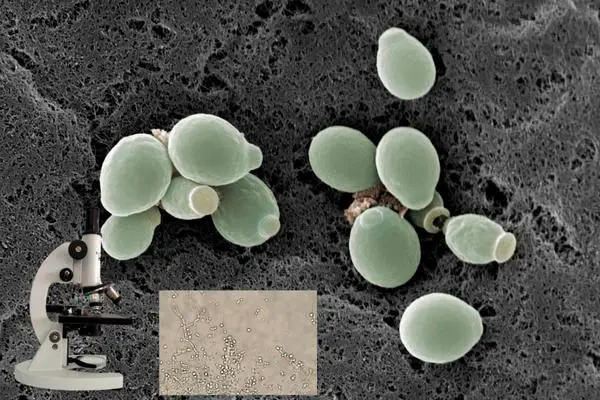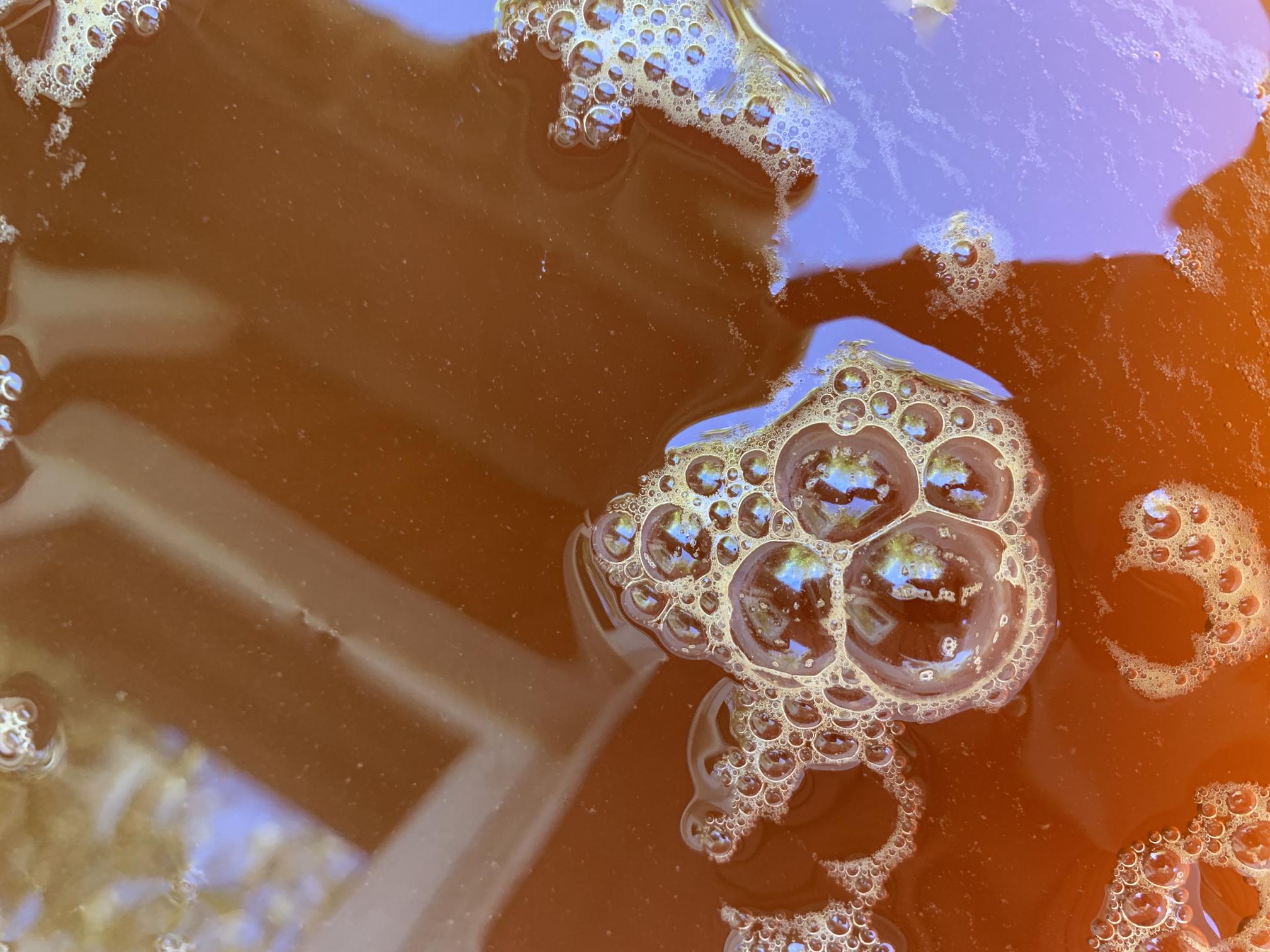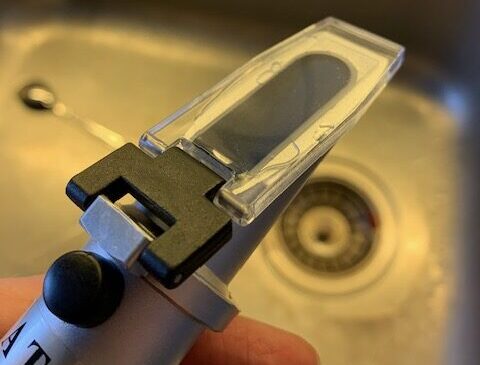As a seasoned brewer, I have had my fair share of challenges and triumphs when it comes to crafting the perfect cider.
One of the most common problems I encountered when I started out, and a question that I often get from fellow brewers, is: Why did my cider fermentation suddenly stop?
There are several reasons why your cider may have stopped fermenting prematurely. Overall, the most common reasons will fit in one of the three categories:
- Suboptimal fermentation environment (temperature, pH, toxins etc.)
- Lack of nutrients in substrate.
- Auto inhibition of yeast (waste product accumulation).
While it might seem disheartening, it’s important to remember that this is a common issue, and it can often be fixed with a bit of troubleshooting.
In this blog post, I will outline five of the main reasons why your cider may have stopped fermenting, and offer some potential solutions for each.
Reason 1: The Yeast Has Been Killed
One of the most common reasons why fermentation may stop prematurely is that the yeast has been killed.

This can happen if the temperature during cider fermentation is too high, or if the cider contains additives that are toxic to yeast.
Wrong fermentation temperature
Yeast works optimally at around 30C (86F), but will stop fermenting at around 42 (107F). Shorter heat or cold shocks can have the same effect.
I recommend never going near the higher temperature range as this will also negatively impact the taste. We usually brew our ciders below 20C (70F). Go too low <10C (50F) you start forcing most yeast strains into dormancy, also known as cold crashing.
Solution:
Keep your fermentation at a steady temperature that is ideal for the yeast strain you are using. Most strains of yeast prefer a temperature between 60°F to 75°F so keep it in that range until the fermentation starts again. Then you can move it to a lower range again.
Inhibition by sulfites (campden)
I’ve had a few cider fermentations stop on me (or never really start…) because I added too much sulfite or inoculated my yeast too early.
When you press your own apple juice, there will be wild yeast present that you can kill off using sulfites/Campden to get a more controlled monoculture.
However, if you add too much campden, it will also affect most commercial yeasts.
Solution
What I did to restart the fermentation when overburdened by sulfites was:
- Splashing the juice by pouring it back and fourth between two containers.
- Leaving the fermentation vessel semi-open to allow air (and SO2) to escape.
- Start a fresh yeast culture grown in pasteurized apple juice.
The oxygen added through splashing will react with the sulfites in brew allowing it to escape as SO2 gas.
Leaving the vessel open for a few days allows everything to escape and adding a new culture afterwards will restart the fermentation.
There are also other things you can do to remove sulfites, especially if you are at a later stage of fermentation and do not want oxygen exposure, such as reacting sulfites with copper, which I have written about here.
Presence of other toxins
So, there may be other toxic substances to the yeast present in your cider.
These could be sorbates or benzoates if you are using store bought apple juice or even some pesticides/herbicides could affect the growth of the yeast.

If you are brewing from concentrate, the chlorine, fluoride and hardness of the tap water could can also play a role in yeast activity.
Other yeasts present in the (wild fermenting) brew could also compete with the added or best fermenting yeast without growing well at high ABVs themselves.
Solution
As there can be many toxic substances in juice that can inhibit yeast (although generally rare…) it is hard to propose a general solution.
Some substances can be heat treated away, other break down by cold temperatures (freezing), wheres some cannot be removed and will have to be diluted out with “clean” juice.
When these things are solved, add some fresh yeast starter to restart the fermentation.
Reason 2: Yeast Lacks Nutrients
Yeast needs nutrients to thrive and ferment your cider. If your juice lacks these nutrients, the yeast may stop fermenting prematurely.
Solution:
You can add yeast nutrient to your cider to help the yeast thrive. Yeast nutrient is a blend of vitamins and minerals that yeast needs to grow and ferment properly. Add it at the beginning of fermentation to give your yeast the best chance of success.
Reason 3: The Yeast has gone Dormant
Sometimes, the yeast may become dormant and stop fermenting even though no toxins were present from the start. This can occur if the temperature during fermentation is too low, or if the yeast is burdened by its own waste products or other chemicals resulting from the fermentation.
This can be many secondary metabolites but in particular the acids created during fermentation by the yeast(s) or bacteria present, which may change the pH or inhibit the yeast.
It is therefore important to monitor the pH during fermentation.
Alcohol is another obvious reason, but his will kill the yeas rather than inhibit it to dormancy.
Solution:
Try to keep your fermentation at a steady temperature that is ideal for the yeast strain you are using.
Measure pH and add calcium chloride or baking soda to adjust pH if necessary. Dilution with less acidic juice can also be an option.
If the yeast is old or has been improperly stored, consider using a fresh packet of yeast.
Reason 4: Too Much Alcohol
An obvious one. You will have an idea of the alcohol tolerance of your yeast and a measure of alcohol by the SG at the beginning minus the current one.
Yeast can only tolerate so much alcohol before they start to die off. If the alcohol content of your cider is too high, it could kill the yeast and stop fermentation.
Solution:
Dilute the brew or add a more alcohol tolerant yeast strain.
Next time, consider using a yeast strain that can tolerate higher levels of alcohol. You can also dilute your cider with more juice to lower the alcohol content.
Reason 5: Fermentation Has Actually Finished
Lastly, it’s possible that your cider has simply finished fermenting. A cider that has stopped fermenting may still have residual sugar if the yeast strain used is not capable of fermenting all the sugars present in the juice.
Use a hydrometer to measure the specific gravity of your cider. If the specific gravity is stable over a few days, then fermentation has likely finished.
How do you get fermentation going again?
To get fermentation going again, you can try the following steps:
1. Check the temperature: Ensure that the fermentation environment is within the optimal temperature range for the specific fermentation process. Adjust the temperature if needed.
2. Oxygen exposure: Fermentation processes often require anaerobic conditions. Make sure the fermentation vessel is properly sealed to prevent oxygen from entering, as it can inhibit fermentation.
3. Nutrient availability: Check if the fermentation medium has sufficient nutrients for the microorganisms to thrive. If necessary, add additional nutrients or adjust the pH level to create a more favorable environment.
4. Inoculation: If the fermentation has completely stopped, it might be necessary to introduce fresh starter culture or inoculum to kickstart the process again. This can help introduce active microorganisms to restart fermentation.
5. Mixing or agitation: In some cases, gentle mixing or agitation of the fermentation vessel can help distribute nutrients and microorganisms, promoting their growth and activity.
Remember, fermentation processes can be delicate and vary depending on the specific product being fermented. It is crucial to consult specific guidelines or seek expert advice for the particular fermentation process you are working with.
Conclusion
In my years of brewing, I have come to understand that brewing is as much an art as it is a science. Troubleshooting issues like stopped fermentation is part of the process. The key is to keep learning, experimenting, and enjoying the fruits of your labor.
Here are some final facts about cider fermentation:
1. Cider fermentation is an anaerobic process – it occurs without oxygen.
2. The yeast used in cider fermentation converts the sugar in juice into alcohol and carbon dioxide.
3. Temperature plays a crucial role in cider fermentation. Too high can kill the yeast, too low can make it dormant.
4. Yeast needs nutrients to thrive. Adding a yeast nutrient can help ensure a successful fermentation.
5. Different yeast strains have different alcohol tolerances. Some can tolerate high alcohol levels, while others cannot.
6. Old or improperly stored yeast may not ferment properly.
7. Residual sugar in cider can be a result of a yeast strain not capable of fermenting all the sugars, or fermentation being stopped prematurely.
8. A hydrometer is a useful tool for checking if fermentation has finished.
9. Sometimes, stopped fermentation can be a sign that your cider has simply finished fermenting.
10. Troubleshooting and learning are a big part of the joy of brewing.
FAQs
When has fermentation stopped?
Fermentation typically stops when the available sugars have been consumed by the fermenting microorganisms or when the environmental conditions become unfavorable for their growth. This can include factors such as depletion of nutrients, accumulation of waste products, or reaching the maximum alcohol tolerance of the yeast.
When has wine stopped fermenting?
Wine fermentation typically stops when all the available sugars have been converted into alcohol by yeast. This can occur naturally when the yeast reaches its alcohol tolerance limit, or it can be intentionally stopped by winemakers through various techniques such as temperature control, filtration, or the addition of sulfur dioxide.
When has beer stopped fermenting?
Beer typically stops fermenting when the yeast has consumed all the available sugars and converted them into alcohol and carbon dioxide. This process can take anywhere from a few days to several weeks, depending on the specific beer style and fermentation conditions. Brewers often use a hydrometer to measure the specific gravity of the beer, and a stable reading over a few consecutive days indicates that fermentation is complete. Additionally, the absence of airlock activity and the beer’s clarity can also be indicators that fermentation has finished.
How long does it take to restart a fermentation?
The time it takes to restart a fermentation can vary depending on several factors, such as the type of fermentation, the specific microorganisms involved, and the conditions of the fermentation environment. In some cases, it may only take a few hours to restart fermentation, while in other cases it could take several days. It is important to closely monitor the fermentation process and provide suitable conditions to encourage the growth and activity of the desired microorganisms.
Why has fermentation stopped?
Fermentation can stop due to various reasons, including depletion of fermentable sugars, temperature fluctuations, lack of oxygen, or the presence of inhibitory substances. Additionally, the activity of the fermentation microorganisms may be hindered by pH changes, nutrient deficiencies, or the accumulation of toxic byproducts.





